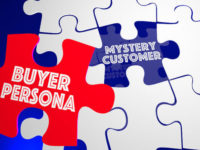As humans we are driven by our emotions. Recalling stories that contain emotional elements is far easier for our brains than recalling information and facts. Just as a “picture is worth a thousand words” a well-told story in words, pictures or video has the power to capture our imagination, stir us and thus connect the information or message we wish to convey with an emotion. Aristotle taught us that persuasive storytelling needs: pathos – emotional connection; ethos – credibility; logos – logic; and kairos – timing.
Nobody wants to feel they are being sold to or preached at, so storytelling is a great way to transmit a message without coming across as a faceless brand blasting out marketing messages. Storytelling is a powerful way for your brand to cut through digital noise by engaging in meaningful interactions with existing or prospective customers. If social media is what people use to express their personal brand, the things they value, they things they stand for, the things they love; then it makes sense for brands to act more like people – this is where the idea of developing and expressing your brand personality comes from.
When someone follows your brand on Facebook or Instagram, they are virtually declaring their love for you and how your brand in some way reflects or represents their values, tastes and personality (or at least how they would like to be seen by others.) Whether it’s a follow, like, photo, video, share or comment about your brand, it gets the credibility that comes from another person relating to the experience you created or provided – and sharing it with others. Engage your audience by asking them, while tagging your brand, to show in pictures or video how your brand has enhanced their life.
When you know who you are and what you stand for (Unique Selling Proposition), you can set the tone and personality of your brand as if you were a person and create posts with that authentic, consistent voice. When you know the needs, wants and motivations of your ideal customer (Buyer Personas), you can create stories that resonate with their needs and build a connection with them. When you know how you are a solution for them, your posts can tap-into that solution and enhance or change their lives for the better.
Here are some examples of storytelling posts that can easily be adapted for any type of small business:
- Share a handy tip or life hack related to your product to add value to one or a combination of your audience’s lifestyles.
- Tell the personal story behind your business and why you love what you do.
- Share posts using staff (with their permission), about their official/quirky position description and how they bring value to your customers. What do you love about their personalities, do they have a special skill?
- Create a mini drama – e.g. “How will John take this box of vegetables and turn it into a masterpiece salad?”
- Share something that is happening behind the scenes. Happy accidents, victories, bloopers.
- Create a short video showing the steps, care and love that goes into making your product and top it off with the wow response when the customer receives it.
Your brand and messages should be consistently credible and logical. The timing of your message or product should be right for your audience’s stage of life, consistent with what is going on in the world or on-trend. Rattling off your brands features will not resonate with your prospects, telling the benefits of those features is more powerful, but the greatest of these, explaining how using their product will make them feel is the key to making that critical emotional connection.
Viktoria Darabi, Founder, Savvy and Successful and Business Connect Advisor, Western Sydney Business Centre
















